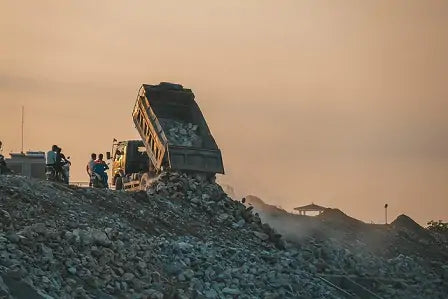Why not add these to compliment your wheelie bins?
Your basket is currently empty.
Shop NowWe guarantee to have the lowest price! Find the same bin for a cheaper price and we will beat it!

The government has committed to recycling 65% of municipal waste by 2035 as part of its Resources and Waste Strategy. Included in this is the aim to send only 10% of waste to landfill. But what actually goes and how can we send less waste to landfill sites?
Even if you religiously sort your recycling out, it might not end up in a recycling facility. This can happen for several reasons including prohibitive costs and contamination. So where does it go if it’s not recycled?
Our plastic waste is sent to countries like Turkey and Malaysia. China tightened its rules around what it will accept in 2018. Plastic that’s shipped to China now must be 99.5% pure, clean, and free from contaminants.
Only around 10% of waste ends up in incinerators. This is mainly because it’s a costly method of waste disposal. Incinerators also emit greenhouse gases and other toxins.
Around 6.6 million tonnes of the UK’s biodegradable municipal waste ended up in landfill in 2019. This reduced to around 6.1 million tonnes in 2020. Things are moving in the right direction. But that doesn’t take away from the fact that things end up in landfill that shouldn’t be there.
We produce waste every day of our lives. Statistics say that the average UK household produces more than a tonne of waste each year. That equates to 31 million tonnes if you include every household. To put that in perspective, our rubbish would weigh the same as 3.5 million double-decker buses.
If you went to a landfill site, you’d see lots of different types of household and commercial rubbish. Organic waste like food, paper, cardboard, and wood ends up there, along with tins and plastics. Some plastics aren’t currently recyclable, but sadly, landfill sites are full of plastics that are. Say you don’t check if plastic is recyclable and you just put it in your general waste bin. That plastic ends up in landfill.
What if you do recycle, but you put incorrect items in your recycling bin? That might mean a load of recycling gets rejected at the recycling facility. When it’s rejected, it goes to a landfill. Commercial and construction waste like rubble, soil, and bricks often goes to landfill too.
There are strict regulations that operators of landfill sites must follow. For example, they must have monitoring systems for groundwater contamination and landfill gas. However, there’s no denying that they come with their own problems.
Anyone sending waste to the landfill has to pay a landfill tax of £98.60 per tonne of rubbish.
When waste rots in landfill, it gives off greenhouse gases like methane which contributes towards climate change. Then there’s the toxins waste leaches into the soil and groundwater, causing pollution and contaminating waterways.
Yes. There’s an argument that even though landfill sites can seem like all kinds of evil, they’re necessary. Even if we improve our recycling rates, there are still going to be some types of waste we can’t recycle. We still need to manage it.
With one climate emergency report coming after another, we all have a responsibility to do our bit for the planet. Here are a few easy ways to send less waste.
One of the most confusing things about recycling is the number of rules. These rules can be completely different depending on where you live. So to avoid confusion, head over to your council’s website. Find out things like what plastics it will and won’t accept. It can also help to do some research on how to read recycling labels on packaging. What does the number in the triangle on plastic packaging mean? That kind of thing.
It might feel arduous, but taking that extra bit of time to sort your waste pays off. For example, say you’re recycling a bottle but the lid can’t be recycled. If you take the time to separate the lid and bottle, you can avoid contaminating recycling. This means it might just avoid landfill.
Speaking of contamination, washing out tins and jars can make a big difference. Clean recyclables mean there’s less chance of a load being rejected and sent to landfill.
There are arguments for and against the very existence of landfill sites. However, whatever you think of them, the idea of rubbish rotting and giving off gases isn’t great. Neither is lots of recyclable and valuable materials giving off toxins and going to waste. So it’s down to us to do our bit and send less waste to landfill. How will you cut down on what you throw away today? For more interesting articles on reducing waste, check out the rest of our blog.